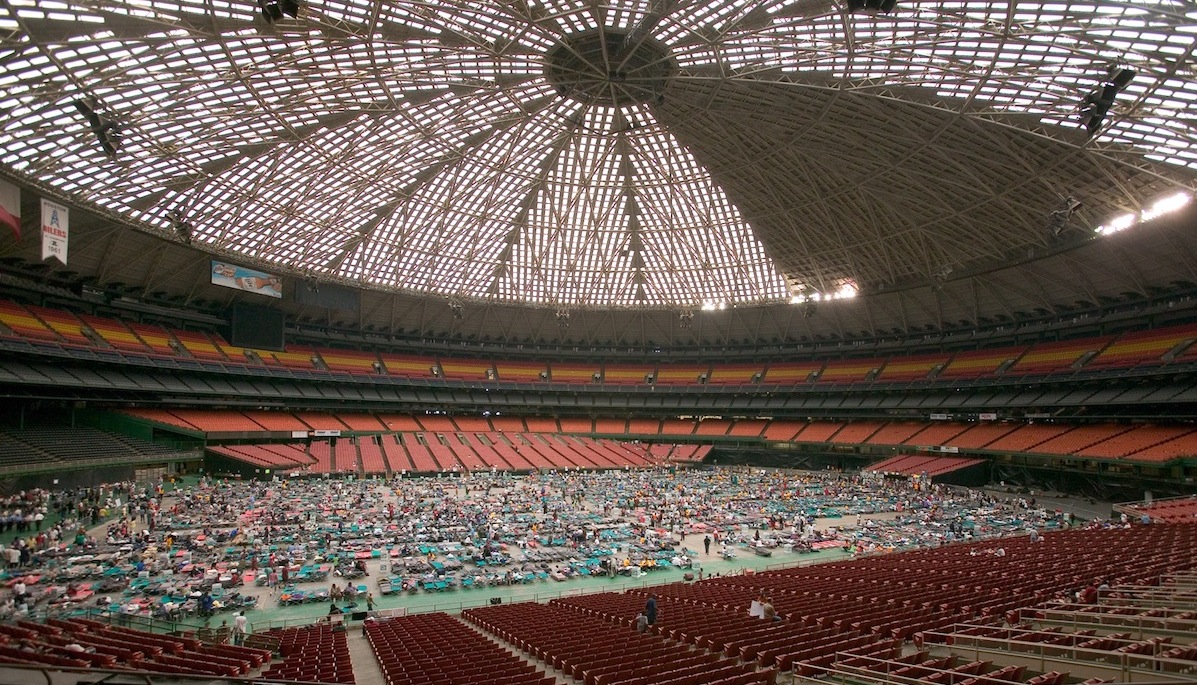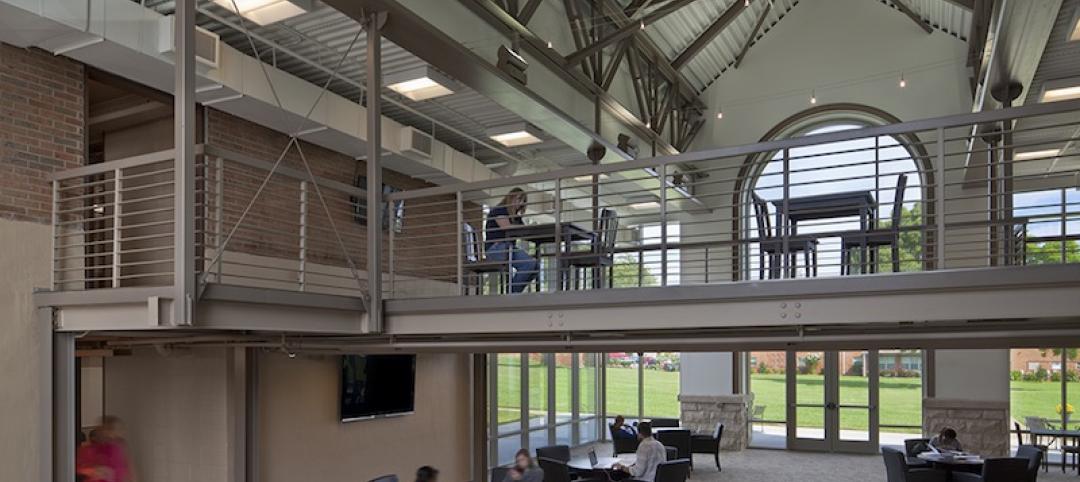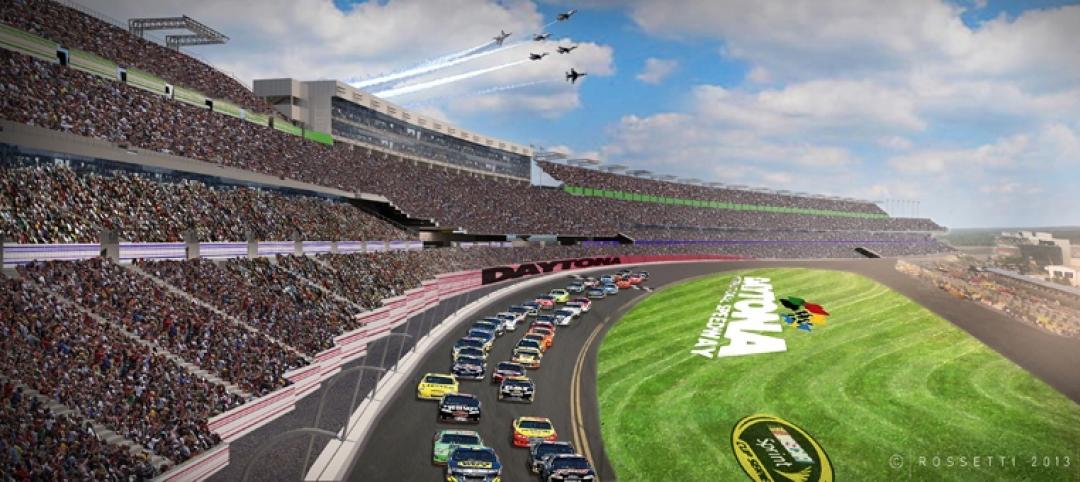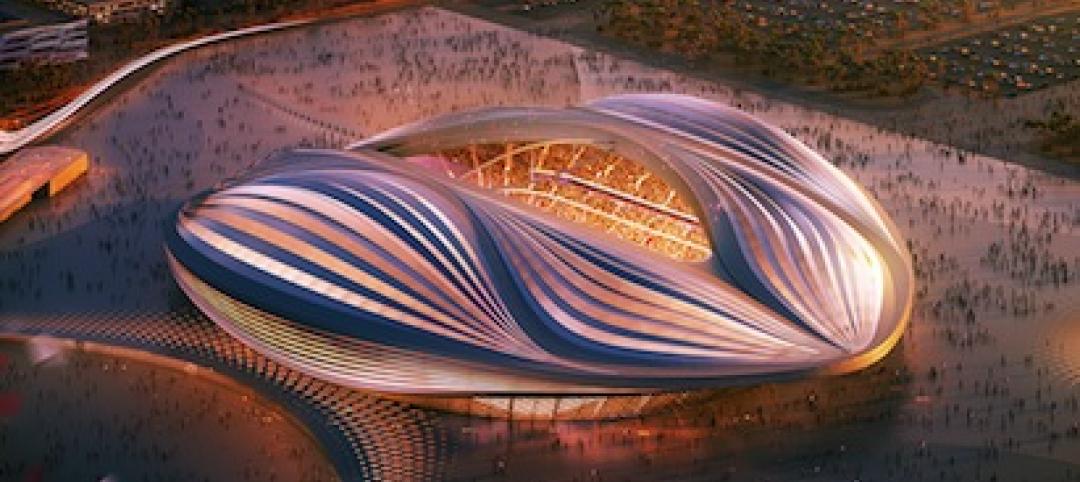An advisory panel of developers, architects, business leaders, and other land-use experts has proposed turning Houston’s decrepit Astrodome, which has been vacant since 2008, into a multipurpose park and civic, programmable space for festivals, concerts, and exhibits.
This is the latest in a series of proposals that, over the past few years, have been floated and, to this point, rejected. They have included converting the Astrodome into a luxury hotel and a movie studio.
In November 2013, voters turned down a $213 million referendum to renovate the building into a convention center and exhibition space. A month later, the Astrodome’s three exterior pedestrian ramp towers were torn down. The National Trust for Historic Preservation has listed the Astrodome among the 11 most endangered historic places.
But the city’s council has rejected the Astrodome’s outright demolition until its final disposition is determined, and because the council fears razing a structure this large could cause damage to the surrounding development.
Houston's city council has rejected the Astrodome’s outright demolition until its final disposition is determined, and because the council fears razing a structure this large could cause damage to the surrounding development.
The one-million-sf, spaceship-shaped building was the world’s first multipurpose domed sports stadium. It is now called NRG Astrodome, and is part of the 350-acre NRG Park complex in Harris County, Texas, which includes a stadium with a retractable roof where the National Football League’s Houston Texans franchise plays, and an arena wherre the popular Houston Livestock Show and Rodeo is held. NRG Park is also near Texas Medical Center, the world’s largest.
Last December, the county and the National Trust for Historic Preservation turned to Urban Land Institute to provide strategic advice. (Harris County’s Sports and Convention Corporation had chimed in, too, suggesting the space be used as a public park.) ULI sent a 10-person Advisory Services Panel, chaired by Los Angeles developer Wayne Ratkovich, to visit the Astrodome for three days. That panel came up with a series of recommendations, which ULI released on March 24.
The panel acknowledges that the Astrodome was now “a shadow of its former self.” But it also refers to the building as an “icon,” whose place in history should be part of any renovation plan. A “new vision” for the stadium, the panel states, could include a museum or educational exhibits that focus on science, technology, engineering, the arts, and math.
The panel’s report lays out a detailed renovation strategy:
• 1,500 parking spaces would be added to the 26,000 slots that already surround the building. That parking would be located in the building’s Levels 1 and 2, with the lower level having 20-foot-high clearance.
• Level 3, which currently consists of vast open space and seating trays, would be converted into a new ground-floor multi-use space that, ULI suggests, could include a public park.
• Levels 4 through 8 would be converted to new programmable areas, such as exhibits “to extend the game-day experience for the Houston Texas, new spaces for [the rodeo] and added space for the Offshore Technology Conference. (One of the key goals of ULI’s plan is to lure the rodeo event back into the Astrodome. The rodeo relocated in 2003.) These programmable spaces could also be used for community festivals, farmers markets, movie nights, charity events and other functions that might also provide new revenue streams.
The panel envisions 450,000 sf of leasable space within the Astrodome’s perimeter, which could accommodate restaurants, retail, and other tenants.
Other recommendations include a complete rehab of the building’s dome, and the creation of new outdoor public space or a live oak allée as a promenade between the light-rail station and the Astrodome’s east entrance. Along that allée there would be permanent outdoor pavilions. The building’s outside area would be upgraded with hardscape and landscape features.
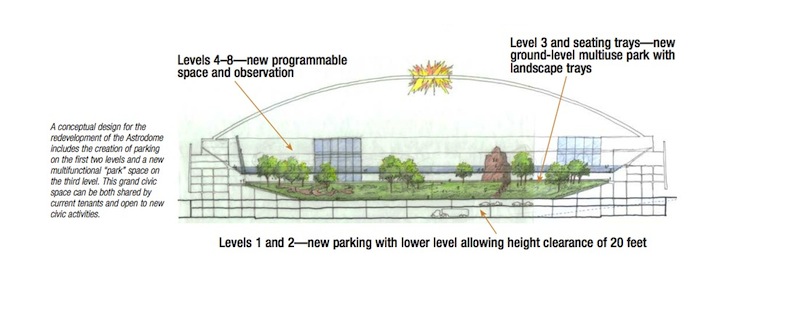
The construction cost for this project, estimates the panel, would be around $242.45 million. (The Astrodome opened in 1965 at a cost of $35 million in taxpayer money.) The panel recommends that new capital streams to pay for this construction would need to be explored, including federal, state, county, and city funds; tax increment reinvestment zones; historic tax credits; Harris County redevelopment; and philanthropy.
To get all moving forward, the panel says the county should assign a project “czar,” as well as identify and empower an NRG Park “champion,” perhaps from the ranks of business or not-for-profit organizations.
Independent marketing and design consultants would need to be hired, and after a plan is conceived, it should be submitted to public scrutiny, says the panel.
The goal would be to complete this plan and break ground on the renovation before the 2017 Super Bowl, so that it could be advertised during the event. The panel expects the renovation to take a year or two to complete, and foresees “future public/private project opportunities”—including hotel, mixed-use, and retail development—in the years 2020-2025.
In its report, the panel says Harris County and its residents are at “an intersection of a series of choices: to act rather than procrastinate, to demand quality rather than settle on mediocrity, to create a common interest rather than simply protect self interests, [and] to [either] protect the status quo or reach for the future.”
Related Stories
| Dec 27, 2013
$1 billion 'city within a city' development approved by Coachella, Calif., city council
The mega development includes 7,800 homes, a retail center, office space, and nearly 350 acres of open space.
| Dec 13, 2013
Safe and sound: 10 solutions for fire and life safety
From a dual fire-CO detector to an aspiration-sensing fire alarm, BD+C editors present a roundup of new fire and life safety products and technologies.
| Dec 10, 2013
16 great solutions for architects, engineers, and contractors
From a crowd-funded smart shovel to a why-didn’t-someone-do-this-sooner scheme for managing traffic in public restrooms, these ideas are noteworthy for creative problem-solving. Here are some of the most intriguing innovations the BD+C community has brought to our attention this year.
| Dec 9, 2013
Tips for designing higher education's newest building type: the learning commons
In this era of scaled-down budgets, maximized efficiencies, new learning methods and social media’s domination of face time, college and university campuses are gravitating toward a new space type: the learning commons.
| Dec 4, 2013
First look: Dubai's winning bid for World Expo 2020 [slideshow]
Dubai has been chosen as the site of the 2020 World Expo. HOK led the design team that developed the master plan for the Expo, which is expected to draw more than 25 million visitors from October 2020 through April 2021.
| Dec 3, 2013
Historic Daytona International Speedway undergoing $400 million facelift
The Daytona International Speedway is zooming ahead on the largest renovation in the Florida venue’s 54-year history. Improvements include five redesigned guest entrances, an extended grandstand with 101,000 new seats, and more than 60 new trackside suites for corporate entertaining.
| Nov 27, 2013
Wonder walls: 13 choices for the building envelope
BD+C editors present a roundup of the latest technologies and applications in exterior wall systems, from a tapered metal wall installation in Oklahoma to a textured precast concrete solution in North Carolina.
| Nov 26, 2013
Video: Zaha Hadid's stadium for Qatar 2022 World Cup
Zaha Hadid Architects, in conjunction with AECOM, has released renderings for a major stadium being designed for the Qatar 2022 FIFA World Cup--an event that will involve up to nine stadiums.
| Nov 26, 2013
Construction costs rise for 22nd straight month in November
Construction costs in North America rose for the 22nd consecutive month in November as labor costs continued to increase, amid growing industry concern over the tight availability of skilled workers.
| Nov 25, 2013
Building Teams need to help owners avoid 'operational stray'
"Operational stray" occurs when a building’s MEP systems don’t work the way they should. Even the most well-designed and constructed building can stray from perfection—and that can cost the owner a ton in unnecessary utility costs. But help is on the way.


